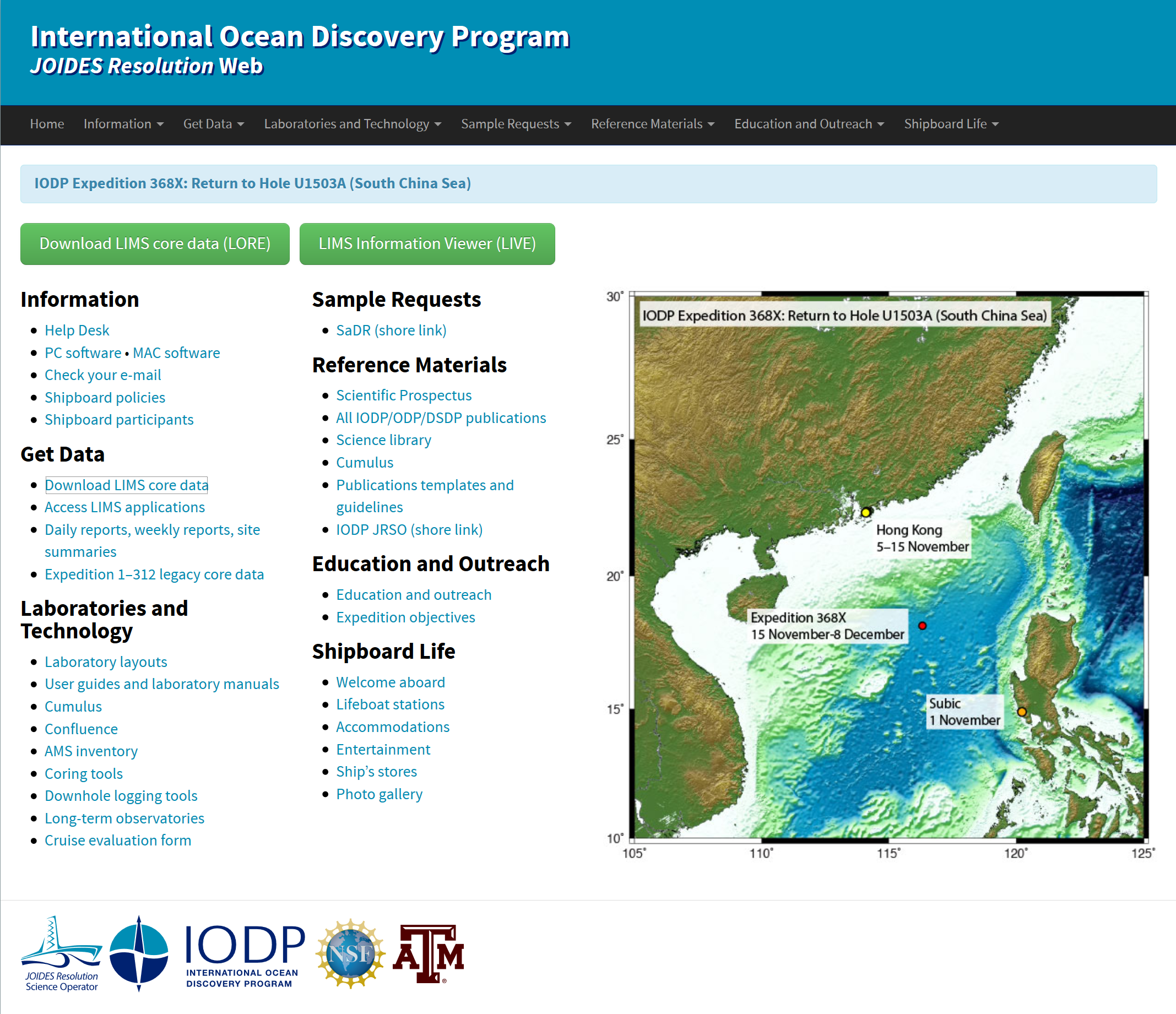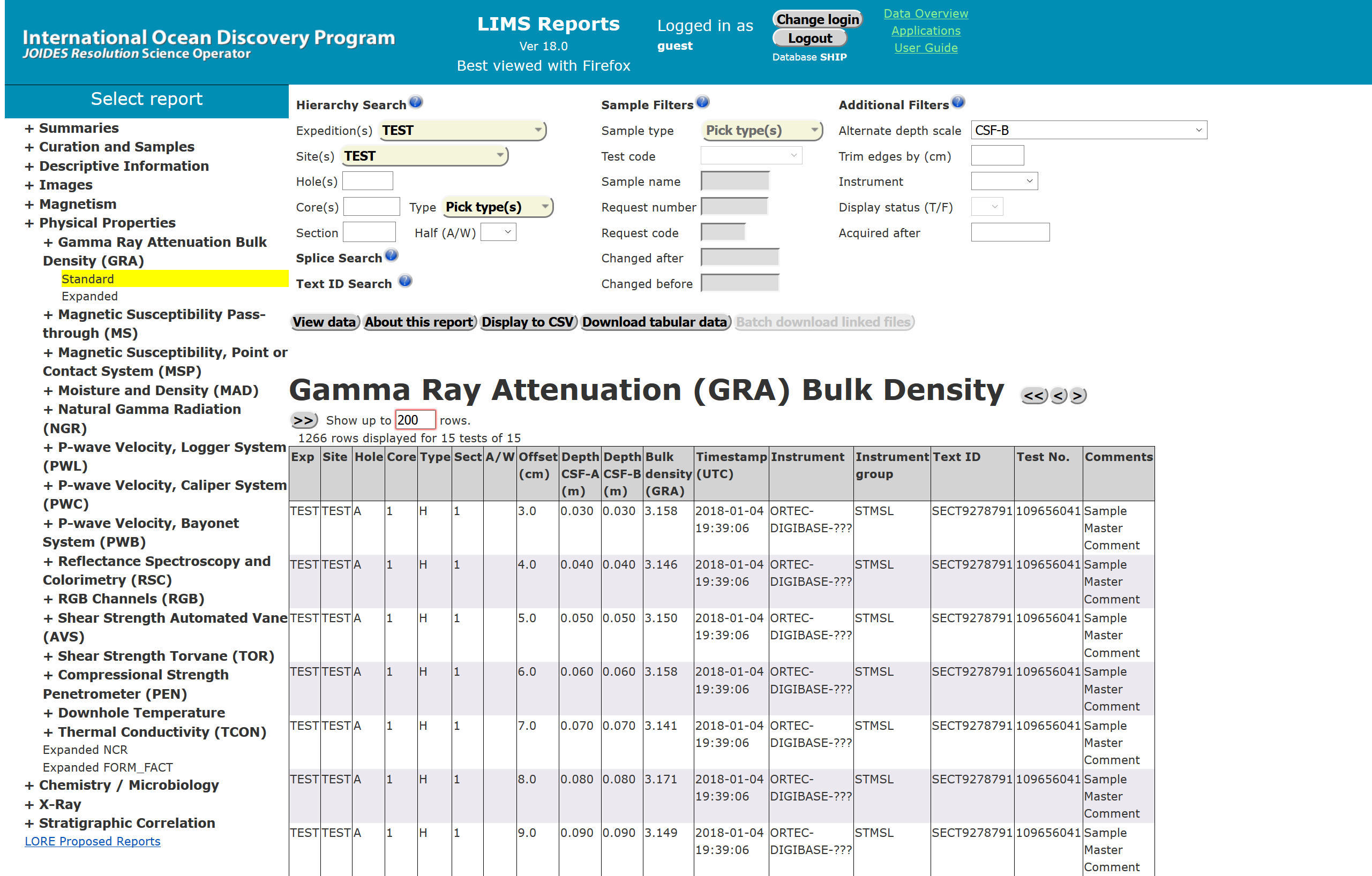Access
The LIMS database contains samples/data for IODP expeditions beginning in 2009 (Expeditions 317 and beyond) and any new samples/data generated from legacy expeditions (DSDP/ODP Legs 1-210 and IODP Phase 1 Expeditions 301-312).
LIMS Report is accessed via the LIMS Reports Interface Page at http://web.iodp.tamu.edu/LORE/ (shore) or http://web.ship.iodp.tamu.edu/LORE/ (ship) (Figure 1).
Figure 1. IODP Web Page Shipboard. Get Data/Download LIMS core data.
Report Format
LIMS Reports provides two ways to view the data:
- Standard reports present the most important data for a particular analysis in a format that is ready to use for data review, research, and publications. The report output can be viewed in a browser or downloaded as a file.
- Expanded reports present all the data for a particular analysis. In cases where a standard report presents data from multiple analyses, the expanded reports comprise a set of all the individual analyses (e.g., chemistry/IW).
Select Report
A choice of reports is on the right hand side of the window (Figure 2). You must select a report and follow the expandable selection until you reach the data set you would like to view.
- Summaries - coring summaries and drilling summaries. Including, but not limited to Core Summary, APC core drilling summary, etc.
- Curation and Samples - sample reports and curator reports in which you can search specific samples based on type/code/location etc.
- Descriptions Information - Desc Reports.
- Images - a variety of images collected from cores/sections/samples. Including, but not limited to LSIMG, Close ups, Thin Sections, etc.
- Magnetism - data collected by instruments in the Paleomagnitism Lab.
- Physical Properties - data collected by instruments in the Physical Properties Lab.
- Chemistry/Microbiology - data collected by instruments in the Chemistry and Microbiology Lab.
- X-Ray - data collected by the XRD and XRF.
- Stratigraphic Correlation - stratigraphic correlation data.
Figure 2. LIMS Report Window.
Hierarchy Search/Sample Filters/Additional Filters
To use the LIMS Reports you must select/fill the fields required (Figure 2). Fields vary with report.
Columns in the Report will include the following plus other information pertinent to the search (each data set will vary).
- Expedition, Site, Hole, Core, Core Type, Section, Section Half.
- Offset: position where the observation was made. Point measurements are reported with a single offset, whereas interval measurements are reported with top and bottom offsets.
- Depth: position where the observation was made, measured from the top of the hole. Point measurements are reported with a single depth, whereas interval measurements are reported with top and bottom depths.
- Depth [other]: depth reported in an alternate depth scale specified by the user.
- Measurement (with unit) and/or image/data file (with format). Multiple columns displayed.
- Timestamp: point in time at which the measurement was made or uploaded to LIMS (always reported in UTC).
- Instrument: sensing device used to take the observation, and Instrument group: data collection device.
- Text ID: automatically generated unique database identifier for a sample, visible on printed labels.
- Test No: Unique number associated with the instrument measurement steps that produced these data.
- Comments: observer’s notes about a measurement, the sample, or the measurement process.
Edited from original: LIMS Report User Guide, February 2016.

